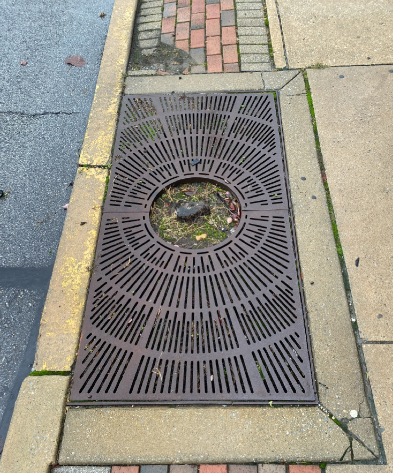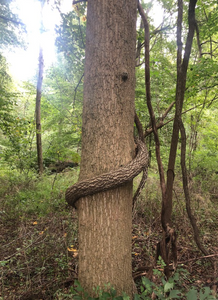Tree Inventory: A Service Designed for You and the Trees
- Kathryn Krueger
- Oct 25, 2023
- 4 min read
Updated: Dec 12, 2024
Written by Kathryn Krueger

We get it. There’s a lot of worry about having trees. At times, they can be costly to take care of and pose liability issues. They seem like obstacles to our development plans. Maybe it seems easier to cut them down rather than keep them. But this is not the mission of Brandywine Urban Forests. Our job is to give you the tools to help protect trees and maintain the urban canopy.
Trees, whether along a street or in the yard, provide us so many beneficial services. You may own the tree on your property, but in reality, the whole community, not just you alone, is benefiting from your tree. Trees clean the air and water, store carbon, provide food and habitat, cool down the environment, and even save you money by reducing your energy consumption. They can raise property value and add to the visual aesthetics of your neighborhood. Trees are good for our physical and mental well-being too.
At Brandywine Forest, we consider all options and offer solutions that enhance the integrity of trees before we lose these valuable members of our community. Our urban forests are just that important.
The Tree Inventory: the Method of Conservation
We want to enhance the green infrastructure that makes our cities and neighborhoods more livable while supporting the wildlife and communities who live there. Consulting with an arborist is the way to go if you care about the trees growing around you. An arborist can give you alternative solutions to dealing with trees of concern, rather than cutting trees without proper examination and consideration of local laws. Take it from the experts. Brandywine Urban Forests can help you make decisions about the trees you are looking after. One of the best ways to do so is through a tree inventory.

Measure the diameter at breast height (DBH) of a tree at 4.5 feet above ground with a diameter tape.
What is a tree inventory?
A tree inventory is a record of the state of the trees or forest on a property at one point in time. Forests seem unchanging, but truly they are never static. Thus, a tree inventory is a reference for when things do change. It helps predict what can happen to a tree in the future and how to prevent issues to best support them. Maybe an infected tree needs to be cut down or maybe it can be treated for pests to help it live longer. It allows clients to identify and monitor trees in poor condition. It helps you locate the tree that does need to be removed. The inventory guides about how to improve your forest or the trees on your property, and where to go next when addressing the issues we find with a tree. All this information is available to you from a tree inventory. It gives you the knowledge you need to protect and serve the trees.
What information is gathered in a tree inventory?
Every tree surveyed in a tree inventory is identified to the species level to the best of our abilities. This is important because we use it to help clients know what percent of their trees are native, invasive, and exotic. It's also useful to know a species because it gives information about a tree's lifecycle, what pests and diseases it might have, and other concerns associated with the species.
Other information we collect are general details about each specimen like height, girth (DBH), canopy spread. We record the condition of each tree and note problems. Mower damage, vine growth, compacted soil, poor pruning, and girdling roots are just a handful of issues we've run into. Structural concerns impact the health of a tree; we note it all. Each tree is tagged and given a GPS coordinate. We map and visualize the data from the tree inventory.
Clients We Serve
The tree inventory is useful to a wide range of clientele. In the past, we've served arboretums, municipalities, public and private institutions, homeowners associations, and private residents. Using our maps and the data we collect, we develop a management plan to meet your environmental and design goals, all while supporting the urban canopy lifecycle. Ultimately, tree inventory analysis gives the community and city planners a long-term strategy to steward their trees.

Tree inventory at Downingtown. On the main street, there is room enough to install more street trees and expand Downingtown's urban canopy. Important sidewalk regulations will be considered, and sidewalks will remain accessible and usable.
Recent Projects
Downingtown has a nice up-and-coming downtown scene. Unfortunately, Downingtown has experienced extensive flooding in the recent past. We did a tree inventory at Downingtown to assess the state of their street trees and locate where they could add more. By installing more trees in the city, Downingtown hopes to improve the benefits from green infrastructure for the community, create a more wildlife-friendly landscape, help reduce runoff and flooding by increasing pervious surfaces, and increase the visual appeal of its streets. We helped Downingtown figure out what it could do to improve the conditions of its existing tree canopy. Recommendations included expanding the size of the tree wells, aerating the soil to reduce soil compaction, and amending the soil quality. In the future, planting more street-appropriate trees could meet the city's goals for mitigating flooding impacts.
Grated tree wells can constrict trees growth, so much so that trees can begin to grow into them (right photo). This is problematic for the tree's vascular system.

This tree well was planted with an ash tree which is now dead. More resilient street trees should replace this one. This tree well was small, had compacted and depleted soil, and foreign objects in the soil.
We recently visited a sunny little park with grassy meadows and a lush deciduous forest. We did a tree inventory to assess risky trees along walking paths. Based on what we found, we are developing a management plan to minimize tree removal and give guidance for creating healthier forests. It is our goal to provide direction that will help the trees that live longer. Unfortunately, we found a lot of pest-stricken Ash trees which left many dead trees along the trails. We also found high densities of vines and excessive mowing; such issues pose a significant health risk to trees. Luckily, low-cost intervention can remove these dangers from the trees and ensure the longevity of the forests and the safety of the community.
Preventing mower damage (left photo) and managing vines (right photo) help the urban forest greatly.













Comments